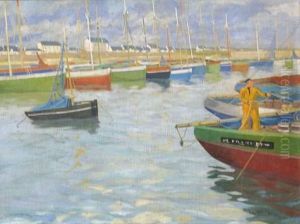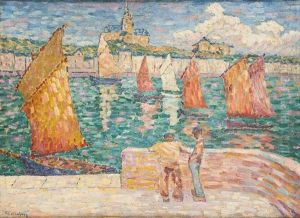Emile Oscar Guillaume Paintings
Emile Oscar Guillaume was a French sculptor, born on February 16, 1867, in Paris, France. He was known for his neoclassical sculptures and his involvement in the revival of classical tradition in French sculpture during the late 19th and early 20th centuries. Although not as widely recognized as some of his contemporaries, Guillaume's work reflects the academic art traditions of his time and the influence of the French Academy.
Guillaume studied at the École des Beaux-Arts in Paris under the tutelage of renowned sculptors such as Alexandre Falguière and Jules Thomas. His education and skill earned him the esteemed Prix de Rome in 1891, which allowed him to study at the Villa Medici in Rome, a prestigious residency for promising young artists. During his time in Italy, he was greatly influenced by classical art and Renaissance masters, which shaped his artistic style.
Upon returning to France, Guillaume began to exhibit his work at the Salon, an annual art exhibition in Paris. His sculptures often depicted allegorical figures, mythological themes, and historical subjects rendered with elegance and precision. He gained recognition and accolades for his works, which were characterized by their refined forms and expressive detail.
Throughout his career, Emile Oscar Guillaume contributed to various public commissions and monumental works. His sculptures are part of several public collections and can be seen in different locations across France. Despite the shift in artistic trends towards modernism in the early 20th century, Guillaume remained committed to the classical style, which he believed embodied timeless beauty and artistic rigor.
Guillaume's commitment to classical sculpture extended beyond his artistic practice. He was also a respected teacher, imparting his knowledge and skills to a new generation of artists. He served as a professor at the École des Beaux-Arts, influencing many students with his philosophy and mastery of traditional sculptural techniques.
Emile Oscar Guillaume passed away on October 29, 1942, in Paris. While his name may not be as prominent as some of his contemporaries, his contribution to French sculpture and his dedication to the neoclassical tradition have secured him a place in the history of art. His works continue to be appreciated for their craftsmanship and classical beauty, reflecting the values of an era that sought to connect with the artistic heritage of the past.


